An Insider’s Walking Tour of Barcelona’s Gothic Quarter
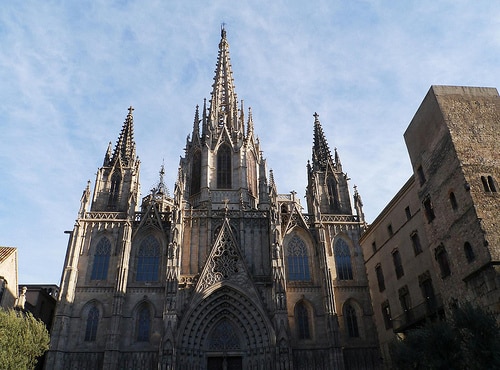
I lived in Barcelona for fifteen years and I can still remember the first time I got lost in the labyrinth of streets between the Ramblas and the cathedral, searching for the legendary flea-pit cinema that used to show films cheap—and even cheaper if you stayed for both films of a double bill. It was dark and every street looked the same, and by the time we found it, we had missed the start—so we went to the excellent and equally legendary Bar del Pi instead. The cinema is no longer the charming dive it once was. Fortunately, the Bar del Pi is pretty much the same, with its wooden beams, walls covered with paintings mostly of the bar itself, and the tuneless piano that customers are welcome to play when the fancy takes them. Unfortunately, the Bar del Pi has probably done more to confuse visitors than anyone since the Romans.
In fact, Barcelona’s Gothic Quarter is relatively compact, though it is still rather confusing, so many visitors don’t discover some of its many lovely squares and narrow streets. Or if they do, only once, by accident when they’re lost, so they can never remember how they got there.
The easiest place to start a stroll around the Gothic Quarter is probably Plaça Catalunya (pictured above)—it’s large, unmistakable and easy to pronounce. Stand in the centre with the fountains behind you, facing downhill. Two streets run downhill from the square. The one ahead of you to your right is the Ramblas, probably the most famous street in Spain. The one ahead of you to your left is Portal del Angel, literally Angel Gate.
Take Portal del Angel, and walk down the wide pedestrian boulevard full of clothes and shoe shops. There’s a slight wiggle around to the left about half way down, but a few minutes later you will find yourself entering a large square—unless it’s Saturday afternoon, when the whole of Barcelona comes shopping and it will take rather longer. Ahead of you are the walls to the Roman town of Barcino, topped by medieval towers and unsightly modern additions. To the left is Barcelona’s Gothic Cathedral (pictured below).
This is Barcelona’s one and only cathedral, and not to be confused with Gaudi’s masterpiece the Sagrada Familia (which technically isn’t a cathedral). You’re standing in front of the main façade, which looks gothic but was added at the end of the nineteenth century. Inside, in a crypt below the main altar, is the tomb of Barcelona’s patron saint, Santa Eulalia. In the cloisters, look out for the lucky geese, the unlucky skull-and-crossbones on the floor, and the fountain with the miniature statue of Sant Jordi, or Saint George, slaying the dragon.
Take the alley to the left of the façade, and walk along the cathedral wall. To the left, look out for the beautiful medieval courtyard that leads to the Frederic Mares museum, with its orange trees, a pond full of goldfish and a small, open-air café. A little further on, also on the left, is the archive of the crown of Aragon. During the day, it’s worth cutting through the courtyard of this beautiful palace to get to the Plaça del Rei beyond. Otherwise, take the next left, which will also get you there.
The building to your left, with its impressive round stairs, was the Royal Palace. It is often repeated that Christopher Columbus was received by Isabel and Ferdinand here, following his first voyage to America. Recent research suggests they actually met him in nearby Badalona, before holding an official reception here shortly afterwords. To the right of the entrance is the royal chapel, built in 1302.
The cube-like structure is by Basque artist Edouardo Chillida. It’s like a small version of his impressive work El Peine del Mar (Comb of the Sea) three large sculptures beaten by the wind and waves on the sea front at San Sebastian.
Now walk down the slight slope to C/ Jaume I.
To the left, beyond the busy Via Laetana, is C/ Princesa, which leads on towards C/ Montcada, where the Picasso Museum is, and to the elegant Parque de la Ciutadella. Or from Via Laetana you could take the diagonal street C/ Argentaria, which leads to the beautiful church of Santa Maria del Mar, and behind it, the vibrant Plaça del Born, with dozens of cafés, restaurants and jewelery boutiques in the streets leading from it (including Montcada, for an alternative route to the Picasso Museum)
For now, turn right along C/ Jaume I.
Option 1
One option would be to take the first left, into the tiny, sedate square Plaça Sant Just. If you keep walking downhill along Baixada de Viladecols, past jewelery workshops and hidden bars, after about five minutes you will stumble across an impressive remnant of the Roman walls, overgrown and overlooked. Just beyond is the main Post Office, where you emerge, blinking in the sunlight, at the edge of the marina. Just ahead of you is the Roy Lichtenstein statue that is supposed to represent Barcelona, and to the left of it, Mariscal’s lobster statue that is supposed to represent…a lobster. From here, you can walk straight ahead, beside the marina, to the beach. Or turn right and walk along the marina the other way and you get to Christopher Columbus at the foot of the Ramblas. Then you just follow the Ramblas up and eventually you get back to Plaça Catalunya.
Option 2
The other option is to continue along C/Jaume I to Plaça Sant Jaume, the physical and political heart of the Old Town. This was the centre of the Roman town, where the forum was located, at the crossroads of the Decumanus and the Cardo. The building along the top edge of the square is the Generalitat, the seat of the Catalan regional government. Opposite is the Ajuntament, or City Hall.
Take the street to the right of the Generalitat, C/Bisbe. You walk beneath a pretty neo-gothic bridge (another nineteenth century addition, I’m afraid) back towards the entrance to the cathedral cloisters. Opposite the entrance is a tiny square, Plaça Santa Garriga i Bachs. Turn left at the far end, along C/Montjuic del Bisbe, and you come to the most tranquil and hidden of the squares in the Old Town, Plaça Sant Felip Neri (pictured below), where the only sound is the chuckling of the small fountain. This was the heart of the Jewish quarter and the site of a Medieval graveyard. The façade of the church is peppered with shrapnel damage from the Spanish Civil War (1936-1939). There is also the small, quaint shoe museum.
There is only one other exit from the square, so take this. Turn right at the end, along C/Sant Sever, then right again on C/Banys Nous. A little further along is a dog-leg junction with C/Palla. If you continued bearing right, you would again get back to the cathedral. Instead, take the dog-leg left along C/Palla, almost doubling back on yourself. This brings you, a minute later, to the most mis-named square in town. It’s actually Plaça Sant Josep Oriol, but thanks to the famous Bar del Pi, everyone thinks this is the Plaça del Pi (including many maps!). In fact the Plaça del Pi is the next one, just a few metres along from the bar. Pi means pine, and there are a couple of Umbrella Pines here to confirm your location. There is also a famous knife and scissor shop and the church, Santa Maria del Pi. If you continue past the church, in a couple of minutes you get to the Ramblas. There, stroll right, up the slope back to Plaça Catalunya, or left, down hill to the Christopher Columbus monument and the marina.
Alternatively, C/Petritxol, opposite the church and to the left of the knife shop, is famous for its cafés serving hot chocolate, with or without the typical Spanish batter-sticks called churros, or the more Catalan pastries called ensaimadas. At the end of Petritxol, turn left along another shopping street, C/Ferretaria, for the Ramblas or right for the cathedral. Or if it’s sunny, I can think of nowhere better than returning to the Bar del Pi for a cold drink and a spot of people-watching!
[photo credits: Placa Catalunya by Ferad Zyulkyarov, La Seu Cathedral by Niall Corbet, Inside Gothic Cathedral by Neil Howard, Parque de la Ciutadella by Oh Barcelona, Placa de Sant Felip Neri by Rick van Tuijl]
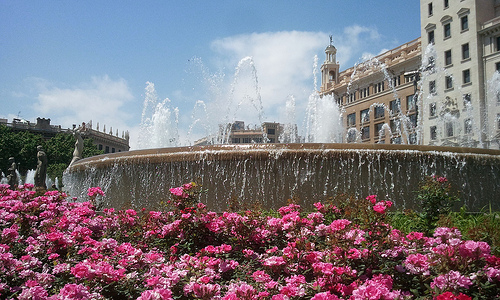

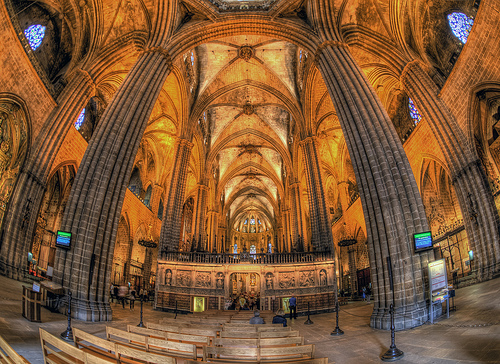
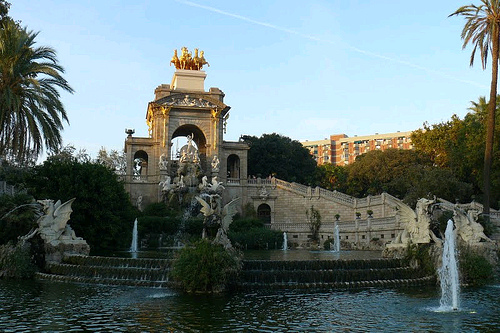
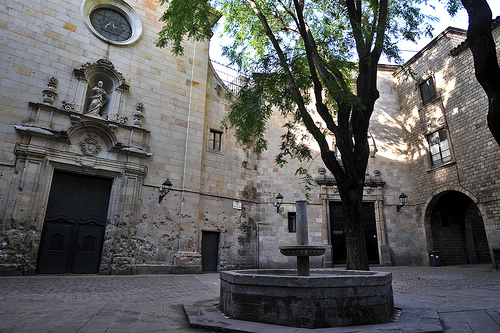








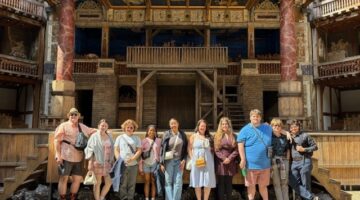
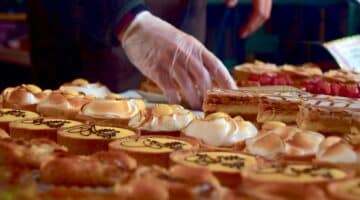
Do you have more great artleics like this one?